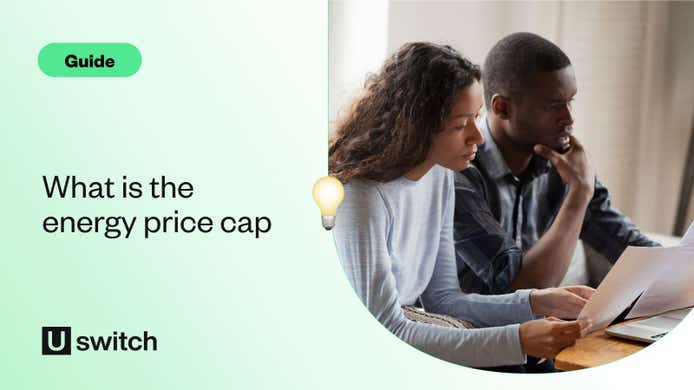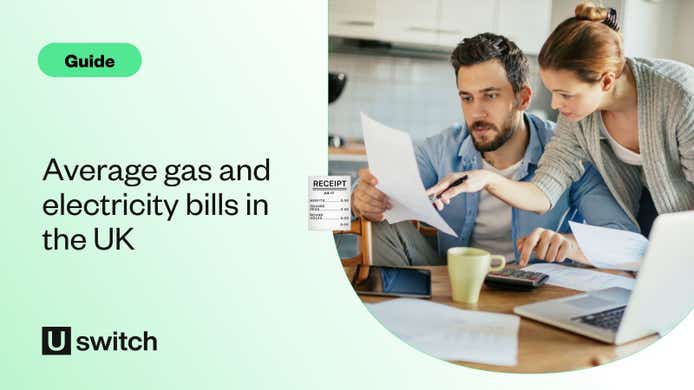While energy switching is back, it might not be the right option for everyone. The good news is you can still take measures to use energy more efficiently and keep your bills down as much as possible.
When it comes to the kitchen, you don't necessarily need to invest in a state-of-the-art low-energy oven to improve the energy efficiency of your kitchen. Being more mindful of your cooking processes can significantly reduce the amount of energy you use and cut your energy bills in the process.
We’ve pulled together more than 20 simple, common-sense tips to help you become a more energy-conscious cook.
Top tips for energy-efficient cooking
- Microwave vs oven: there’s a clear winner! Use a microwave whenever possible. It focuses energy directly on your food, making it the most efficient way to cook.
- Kettle-boil water before adding it to the pan. This saves energy when you’re cooking vegetables and pasta on the hob.
- Only use the water you need. If you’re cooking vegetables, use just enough water to cover them, or steam them so they don’t boil dry.
- Try a slow cooker. Although meals take longer, slow cookers are a tenth of the oven wattage, meaning they consume far less power per hour.
- Cook in bulk. You can store extras for later or freeze them for those days when you just don’t feel like cooking. Best of all, you’ll be maximising oven space and making the most of the heat.
- Don’t open the oven before your meal is ready. Ovens lose up to 25 degrees of heat when you open them partway through. This affects cooking times and uses more energy to get them back up to temperature. Glass oven doors are a useful solution so you can see what's happening inside.
- Defrost frozen food in the fridge. This requires thinking ahead but typically halves the cooking time and means you don’t use extra power cooking food from frozen.
- Don’t preheat for too long. Find out how long your oven takes to preheat, so you're ready to start cooking as soon as it's up to temperature. It may beep to let you know it's ready, so listen out!
- Boil potatoes in a saucepan before roasting them. This reduces the amount of time they take to cook in the oven (and gets better results!).
- Use glass or ceramic dishes in the oven. They retain heat better than their metal counterparts, making them the most efficient to use in the oven. You can even set the heat lower than needed because of the increased efficiency provided by these dishes.
- Skewer your food. If you’re cooking jacket potatoes or joints of meat, inserting a metal skewer can conduct heat more evenly through the food and speed up cooking.
- Cut food into smaller pieces. It creates more surface areas for the heat to reach, speeding up cooking times and making sure meat dishes are cooked more evenly.
- Upgrade your oven. Fan-assisted and convection ovens use fans to circulate heat around the food. This means cooking temperatures can be lower than in a conventional oven.
- Turn off the electric oven early. Switch it off ten minutes before the food is done and the residual heat will keep food cooking. Set a timer to remind you or choose an oven with an automatic shut-off function.
- Match the pan size with the amount of food you’re cooking. This way, you only use as much heat as you need.
- Use the right burner. Choose a ring that’s too big for the pan and you’ll waste energy. A pan that’s too big for the burner will take longer to heat.
- Cover saucepans when possible. Put lids on to retain heat and cook food faster, unless a recipe specifically advises against it.
- Use a multiple-tier steamer. This is a simple way to boil and cook vegetables, fish, rice and even meat on a single ring.
- Turn down the heat. Too much vigorous boiling wastes energy and can turn vegetables to mush. Most dishes only need to simmer.
- Use a pressure cooker. It can save up to 90% of the energy used to boil a pot on the hob. The sealed lid traps steam and means that the food cooks more quickly and efficiently. Meat can be soft and tender in less than an hour.
- Choose the best pan for the job. Copper-bottomed pans heat up more quickly than stainless steel, while cast-iron pans retain heat more efficiently.
- Try passive cooking. When you have food bubbling in a pan and turn off the heat, the food carries on cooking in the boiling liquid. Why not try it with pasta?
- Keep your hob clean. Any stuck-on food will absorb energy and make the hob less energy efficient.
- Don’t keep baking trays in the oven. It restricts air flow and increases cooking times.
- Take appliances off standby. Fridge-freezers can’t be turned off but kettles, microwaves and other kitchen gadgets can all be turned off at the wall.
Which is the most energy-efficient appliance?
The appliance you use to cook has a strong bearing on how much energy you use and how expensive your bill is at the end of the month. But what’s more energy-efficient: a microwave or an oven?
Microwave cooking
It’s fair to assume that the microwave must be the most energy-efficient appliance to use because it's the quickest. This is true but you probably won't use it for any complicated recipes, which is where its speed would be the biggest advantage.
The easiest way of judging the energy efficiency of any appliance is to examine the cost per unit of energy used. Uswitch research indicates that a microwave costs around 25p per hour of use. However, it’s unlikely that you would use it for a full hour so the actual cost would probably be much lower - 10 minutes of use would cost about 4p.
Oven cooking
The oven is the most commonly used appliance because of its versatility - it will usually include hobs to fry or boil food, a grill and an oven. An oven would cost about 15p per hour of use, making it cheaper than a microwave.
Slow cooker
Although slow cookers take longer to cook food, they’re rated at as little as 200 watts – less than a tenth of some electric ovens. An average-sized slow cooker uses just 1.3 kWh per meal cooked, which when comes in at 8p per hour on an average energy tariff.
This can be further reduced if you have solar panels, as you can set the cooker to run during daylight hours when some or all of the electricity will be free.
How do I choose energy-efficient cooking appliances?
There are numerous ways you can cut your energy consumption when cooking, but the most effective step is to audit your current appliances to see if switching to a more energy-efficient alternative is cost-effective.
How to calculate how much electricity your oven uses per hour
Start by examining your oven or ovens. On average, electric ovens have a power rating of 2.0-2.2 kWh, which means they consume between 2,000 and 2,200 watts for every hour they’re being used on a medium-to-high heat. The old energy ratings system was being phased out in favour of a simple A-G system, so look for gas and electric ovens that come with A (if launched after March 2021) or A+ (if launched before March 2021) ratings.
Also take care when choosing an oven for its features – for example, check out the oven’s insulation levels (including its doors – look for triple-glazed models). The better this is, the more the oven retains heat to maintain its temperature and reduce the time (and thus energy) needed to heat it up.
On the other hand, while a self-cleaning ‘pyrolytic’ oven might sound attractive, it’s not very energy-efficient. That’s because to remove the grime that’s baked on, the oven heats itself to 400-500 degrees Celsius to literally burn it off.
Are microwaves are more energy-efficient?
Yes: not only do microwaves use less energy (typically no more than 1,500 watts), but they’re far more efficient as they only heat the food itself rather than waste energy heating the air around them. There’s no warming-up time – microwaves reach temperature virtually instantaneously, and food takes far less time to cook. When it comes to heating up food, microwaves win out over ovens every time.
Will I save energy by switching to induction hobs?
Almost certainly – like microwaves, energy is more efficiently converted to heat (they reach temperature much quicker than regular electric hobs) using the hob’s electromagnetic burner, which heats the ceramic plate above it.
There are potential drawbacks that may make them impractical, however. First, they’re not suitable for anyone using a pacemaker (the electromagnetic field can interfere with the pacemaker’s settings) and second, they require specialist pans made from iron.
What about my kettle?
We boil our kettles 1,500 times a year on average. While a lower-wattage kettle might appeal, it takes longer to boil the water so is a false economy unless you have solar panels that may be able to offset most – if not all – of the electricity being used during the daytime.
For everyone else, look for rapid-boil models in the 2.5-3.0kWh range that are designed to boil small amounts of water quickly. You should also look for a water indicator to ensure you only boil what you need, while other features that help reduce consumption include controls to heat to lower temperatures for hot drinks that don’t require boiling water, and insulated casings that keep the water hot for longer after boiling, reducing the need to keep re-boiling the kettle.
Which type of hob is more energy-efficient?
There is a growing trend for kitchens and oven manufacturers to use induction hobs, where an electromagnetic burner heats a ceramic plate that the pan sits on, as opposed to more traditional gas-ringed hobs. But which option is the most energy-efficient?
In terms of energy use, research generally indicates that induction hobs are cheaper to run, with induction hobs proving to be 74% efficient in converting energy to heat, using 57% less energy than gas hobs.
How much impact can energy efficiency in the kitchen have on the environment?
There’s also a question around how much impact an energy-efficient approach to cooking can actually have on the wider environment. You might save money on your energy bills, but is there anything you can do to be more green in the kitchen?
Most (if not all) of the tips above are designed to make you more energy-efficient in the kitchen, and the knock-on effect of that is a generally greener approach to cooking which benefits the environment as a whole.
Do I need to buy a new oven to be more energy-efficient when cooking?
If your oven isn’t working, it’s worth replacing. Having a working cooker is essential for energy-efficient cooking because it will help lower your fuel consumption and keep your gas and electricity bills down.
Consider investing in a replacement if the existing appliance is over ten years old, regardless of whether it works properly or not. If the appliance is faulty and will be expensive to fix, it will usually be easier (and potentially cheaper) to just buy a new one rather than go through the hassle of having it repaired.
When it comes to oven-related issues that might affect energy efficiency, it’s worth checking that:
- the door of your oven is properly sealed, as we’ve already noted, the amount of heat that leaks out during cooking has a big impact on the energy efficiency and energy consumption of an oven
- your oven thermostat or fan still works, because if air isn’t circulated around the interior of the oven, the speed at which food is cooked will be reduced.
If you decide that you need a new oven and you decide to opt for an electric model, then it's important to choose an energy-efficient oven, as well as ensure that it has triple glazing on the oven door and a good level of insulation.
The energy label on any appliance will tell you how energy-efficient it is. An appliance with an “A” rating is the most energy-efficient and can reduce long-term running costs.
How energy-efficient is my kettle?
Around 95% of people boil a kettle every day and 40% boil water five times a day or more. The humble kettle is a key target if you want to improve energy efficiency.
A lower-wattage kettle might appeal, but it takes longer to boil, making it a false economy. Of course, you may have access to free or cheap electricity via solar panels.
Tips for buying a more energy-efficient kettle
Look for kettles with:
- a low minimum fill, ideally 300ml or less, so you can just boil the water you need.
- a clear water indicator so you know exactly how much water you’re using.
- temperature controls - not all drinks need to be boiling.
- a limescale filter - limescale build-up around the elements makes the kettle less efficient.
- a keep-warm function means so you don’t have to repeatedly reboil the kettle - great if you’re a frequent tea drinker!
- automatic switch-off immediately after boiling.
- a bio-based plastic casing.
Switching to an eco kettle uses 20% less energy than a conventional electric kettle. This is a saving of around £10 a year, according to the Energy Saving Trust.
Find out which appliances use the most energy.
How will the cost of hosting Christmas affect your energy bills?
Uswitch surveyed the British public to find out how the cost of living crisis might impact their Christmas plans this year. The results showed that two thirds of people in the UK are reducing their costs this Christmas due to the rise in living costs.
Households are planning to reduce their Christmas spending by £269 on average compared to previous years. This reduction in spending will come in the form of fewer Christmas presents, less food, less alcohol, less socialising and fewer Christmas decorations.
When it comes to cooking Christmas dinner, half of those surveyed are planning on changing their cooking habits to reduce the impact on their energy bills. The energy bill cost estimate for a four person traditional Christmas meal cooked in an electric oven and hob is £8.14, whilst using an air fryer and microwave for the same amount of people and ingredients is £1.94.
Cut the cost of hosting this year by using Uswitch’s Christmas cooking calculator, which can help you cut down the energy cost generated by cooking your Christmas dinner.
The tool calculates the energy cost generated based on each individual item and its average cooking time.
Christmas cooking energy usage FAQs
How do I save energy cooking Christmas dinner?
You can save energy when cooking by thinking about the type of appliance you use to heat food up. While the oven is the most commonly used piece of cooking equipment, it’s also one of the least energy-efficient. Air fryers are more energy-efficient and, as a result, have seen sales rocket. Microwaves and slow cookers also use less energy than ovens, and could be valuable additions to your kitchen as UK households look for ways to keep energy bills to manageable levels over the colder months.
Does cooking use a lot of electricity?
Cooking can use a lot of electricity, but some methods of cooking use less energy than others. Slow cookers, for example, use about the same amount of energy as an LED light bulb which makes them extremely energy-efficient. If you’re buying a new oven, microwave, air fryer or slow cooker, look at their energy efficiency rating and their average energy use in kWh to get a good idea of how much electricity they’ll use.
How energy-efficient is induction cooking?
With an energy efficiency rating of around 85% (i.e. only 15% of its energy is wasted), induction cooking is generally agreed to be the most energy-efficient way of cooking on a hob. Gas and electric hobs are much less energy-efficient, at around 40% and 75% efficiency respectively. Induction hobs also heat food and water more quickly, but they’re typically the most expensive type of hob so may not be viable for some budgets.
Methodology
Energy use of a kitchen appliance To calculate the energy cost of a kitchen appliance per minute we did the following: We researched how many watts each appliance was using and then turned that figure in kW per minute by using the formula: Calculating Watts Into Kilowatt-Hours: kWh = (watts × hrs) ÷ 1,000 Calculating kWh Into kW per minute: ((watts × hrs) ÷ 1,000) / 60
Energy cost of preparing a specific dish We researched recipes for each potential dish of a Christmas dinner and extracted the cooking type and time. To calculate the number of kW used as well as the cost, we used the formula: (kW per minute per specific appliance x number of minutes used) x current price of electricity or gas For instance if a dish recipe includes 10 mins pan fry and 10 mins oven in an electric oven / stove, then we applied the following calculation: (kW per minute for a stove) + (kW per minute for an oven) x (0.34/60) = £ If a dish recipe includes 10 mins pan fry and 10 mins oven in a gas oven / stove, then we applied the following calculation: (kW per minute for a stove) + (kW per minute for an oven) x (0.103/60) = £



